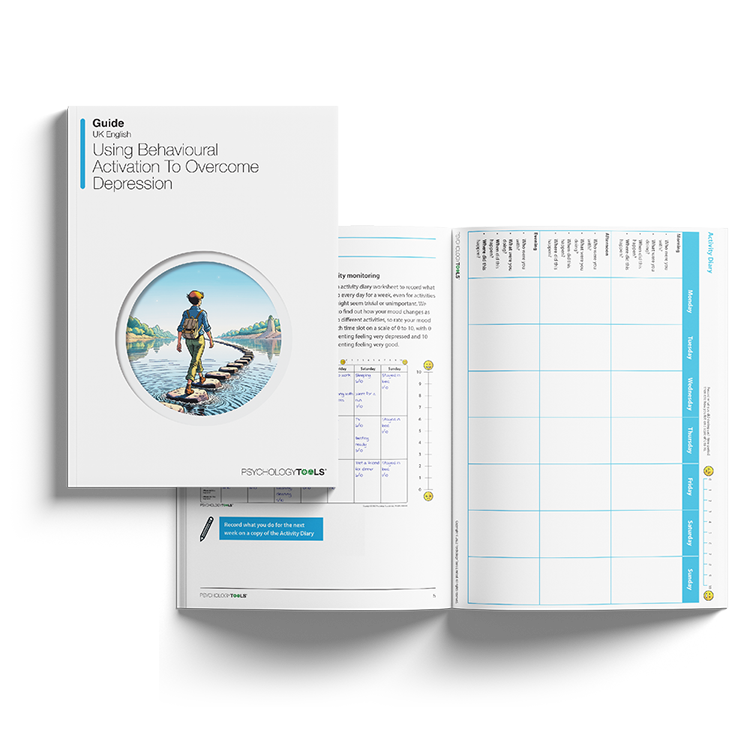Workbook (PDF)
A workbook containing elements of psychoeducation and skills-development.
Behavioral activation (BA) is a structured, evidence-based approach that helps clients break the cycle of depression by reconnecting with meaningful activities and values.

A workbook containing elements of psychoeducation and skills-development.
To use this feature you must be signed in to an active account on the Advanced or Complete plans.

Using Behavioral Activation To Overcome Depression provides clinicians and clients with a clear and accessible guide to behavioral activation (BA) principles. Depression often leads to withdrawal from pleasurable or important activities, reinforcing low mood and isolation. This resource offers a systematic approach to increasing engagement with life again, by focusing on planning and completing activities linked to pleasure, achievement, and connection.
Based on well-established psychological research, the guide emphasises that action often precedes improvements in mood, and that even small steps can create powerful change over time.
This resource supports clinical practice by:
Helping clients increase activity and change cycles of low mood.
Supporting gradual, sustainable behavioural changes.
Encouraging engagement with life-affirming activities during low seasons.
Introduce the vicious cycle of depression and the principles of BA.
Support clients in recording daily activities and mood patterns.
Help clients reconnect with what matters most to them.
Co-create achievable schedules that incorporate meaningful activities.
Identify and overcome barriers to action.
Regularly track progress, adjust plans, and celebrate successes.
Behavioral activation (BA) is grounded in behavioral models of depression (Lewinsohn, 1974; Martell et al., 2001). It proposes that a reduction in positive reinforcement from the environment contributes to the onset and maintenance of depressive symptoms. Withdrawal and inactivity reduce opportunities for pleasure, mastery, and social connection, which in turn intensify low mood.
BA aims to reverse this cycle by helping clients schedule and engage in behaviours that are likely to produce positive outcomes, even when motivation is initially low. Empirical evidence demonstrates that BA is as effective as cognitive therapy and antidepressant medication for many individuals with depression (Dimidjian et al., 2011; Ekers et al., 2014).
Central to this approach is the understanding that behavior change often precedes improvements in mood. Activity is strategically chosen based on personal values, enhancing both motivation and meaningful engagement over time. The emphasis on planning and execution — despite emotional inertia — is key to breaking the depression-maintenance cycle.
This resource supports clinicians by offering structured, practical interventions to increase behavioural activation and reconnect clients with sources of pleasure, achievement, and connection.

Just enter your name and email address, and we'll send you Using Behavioral Activation To Overcome Depression (English US) straight to your inbox. You'll also receive occasional product update emails wth evidence-based tools, clinical resources, and the latest psychological research.
Working...
This site uses strictly necessary cookies to function. We do not use cookies for analytics, marketing, or tracking purposes. By clicking “OK”, you agree to the use of these essential cookies. Read our Cookie Policy